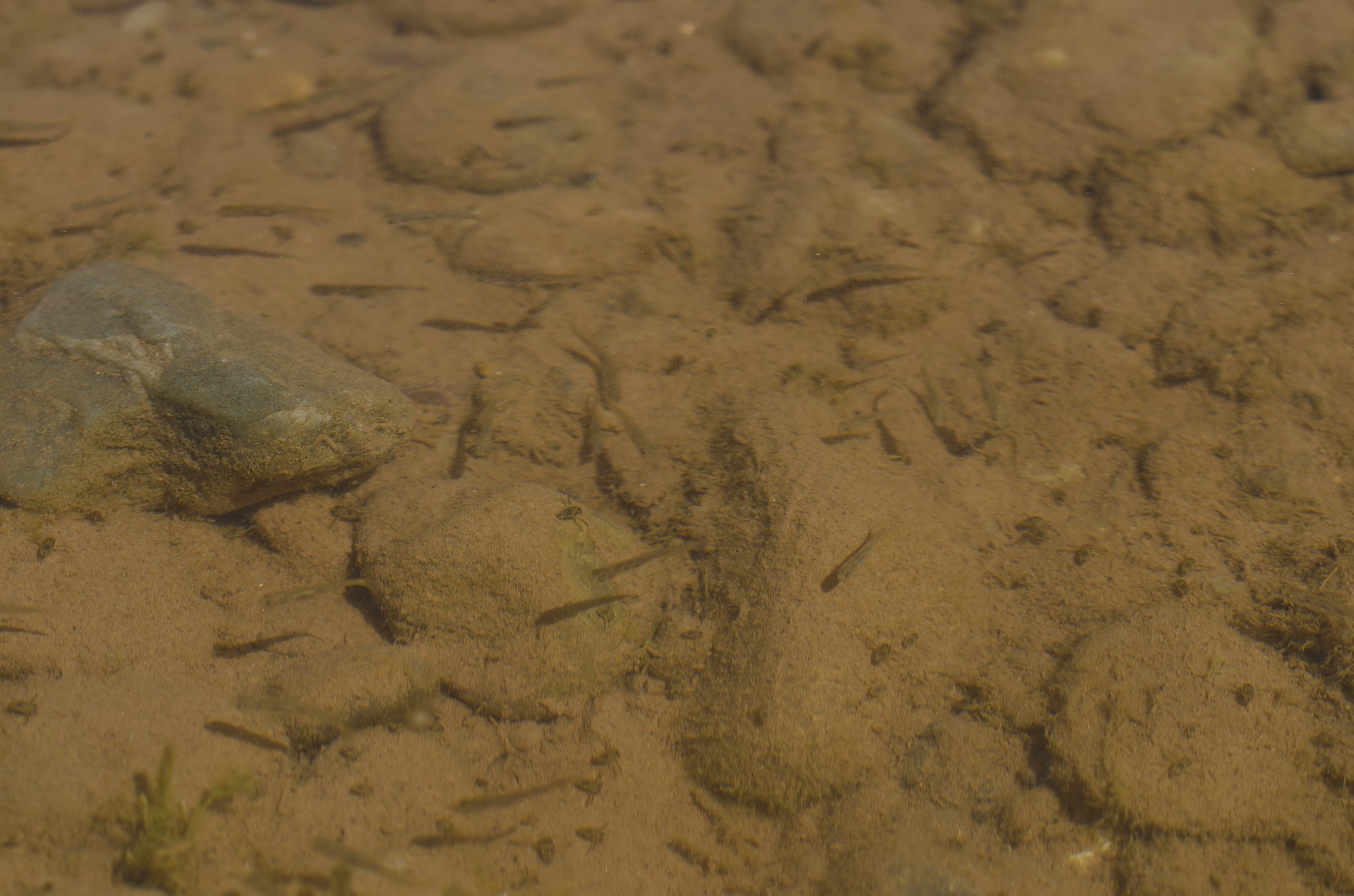Coastal Programs

Bull minnows (Fundulus grandis), also known as gulf killifish, mudminnows, mudfish, cacahoes, and finger mullet, are commonly sold by bait dealers to recreational anglers for live bait. Bull minnows are supplied to bait dealers by fishermen who trap or seine them from the shallow waters of bays and bayous. As a result, the supply of wild-caught fish is not always dependable. Wholesale and retail prices for bull minnows are similar to those for live shrimp.
Bull minnows have been grown experimentally in ponds in Alabama and Texas with good success. Research indicates that bull minnows spawn readily in captivity, are tolerant to a wide range of water qualities, and grow rapidly at moderate stocking densities. This makes them good candidates for commercial culture. One drawback is that individual females do not produce high numbers of eggs compared to many other cultured species. As a result, a large number of spawners and a large amount of pond space are required to produce enough small fish (fry) for grow-out.
Production System

Bull minnows (Illustration credit: Jordan, D. S. and B.W. Evermann. 1896. The fishes of North and Middle America: a descriptive catalogue of the species of fish-like vertebrates found in the waters of North America, north of the Isthmus of Panama. Bulletin of the United States National Museum. No. 47.)
Researchers suggest using a series of ponds to efficiently produce bull minnows. The first pond is stocked with brood fish (3 to 5 inches) in January or February at a rate of about of about 10,000 fish per acre (6,600 females and 3,400 males). Fish are fed a high-protein feed at 3 percent of their total body weight per day. When water temperatures reach 68 degrees F in March or April, spawning mats are placed in brood ponds. These mats are usually 3-foot by 2-foot by 3-inch rectangles of material similar to that used in air conditioner filters. Spawning mat material is available from aquaculture supply stores.
Spawning mats are removed from the brood-fish pond after about a week, and the number of eggs per mat is estimated. Mats are placed in a second pond until approximately 1.5 million eggs have been transferred from the brood-fish pond. The transfer should take place within a 2-week period to promote more uniform size of fish as they grow. Eggs hatch in 2 to 3 weeks, and 1 to 1.2 million fry per acre should be produced under good conditions.
Fry are fed a high-protein minnow feed at a rate of 5 pounds per acre per day. When fry reach about 900 to 1,500 to the pound, they are moved to grow-out ponds at the rate of 50,000 to 200,000 fish per acre, depending on how soon they need to reach market size (2.5 inches). The lower stocking rate can produce market-size fish in about 36 days, while the higher stocking rate takes over a 100 days. Fish in grow-out ponds are initially fed 10 percent of their stocked weight per day. After 10 days, fish are sampled and the feeding adjusted to 5 percent of the total body weight. Fish should be sampled every 2 weeks and the amount of feed adjusted. Some researchers suggest that fish in properly fertilized ponds may not require feeding.
The production system is based on proper pond construction, management, and attention to water quality. The single most important water quality factor is access to a supply of clean saltwater. Bull minnows can tolerate freshwater but will not produce or grow efficiently unless water salinity is at least 5 parts per thousand, or about one-seventh full-strength seawater.
Ponds should average 3 feet in depth, have smooth bottoms, and be graded to allow complete drainage. A catch basin is desirable to assist in harvesting fish. All ponds should be filled with water that is passed through a fine cloth filter to eliminate wild fish. The water should be fertilized (for example: 40 pounds of 12-12-12 fertilizer per acre at 1-week intervals) to stimulate production of natural foods. Hatching ponds and grow-out ponds are typically treated with a diesel (2 pints) and oil (2 gallons per acre) mixture prior to stocking and periodically thereafter to control predacious insects. Ponds should be monitored and records kept for temperature, salinity, dissolved oxygen, feeding rates, growth rates, and production.
More detailed information about growing bull minnows can be found in the following publications:
- Production of Bull Minnows (Fundulus grandis) for the live bait market in coastal Alabama. Alabama Marine Resources Bulletin No. 13. Claude Peteet Mariculture Center, P.O. Box 458, Gulf Shores, AL 36542.
- Raising Mudminnows (TAMUSG-86-506R). Sea Grant College Program. Texas A&M University, 1716 Briarcrest Dr., Suite 603, Bryan, TX 77802.
This work is partly a result of research sponsored by the Mississippi-Alabama Sea Grant Consortium and NOAA, Office of Sea Grant, Department of Commerce, under Grant No. NA86RG0039. MASGP-98-004

